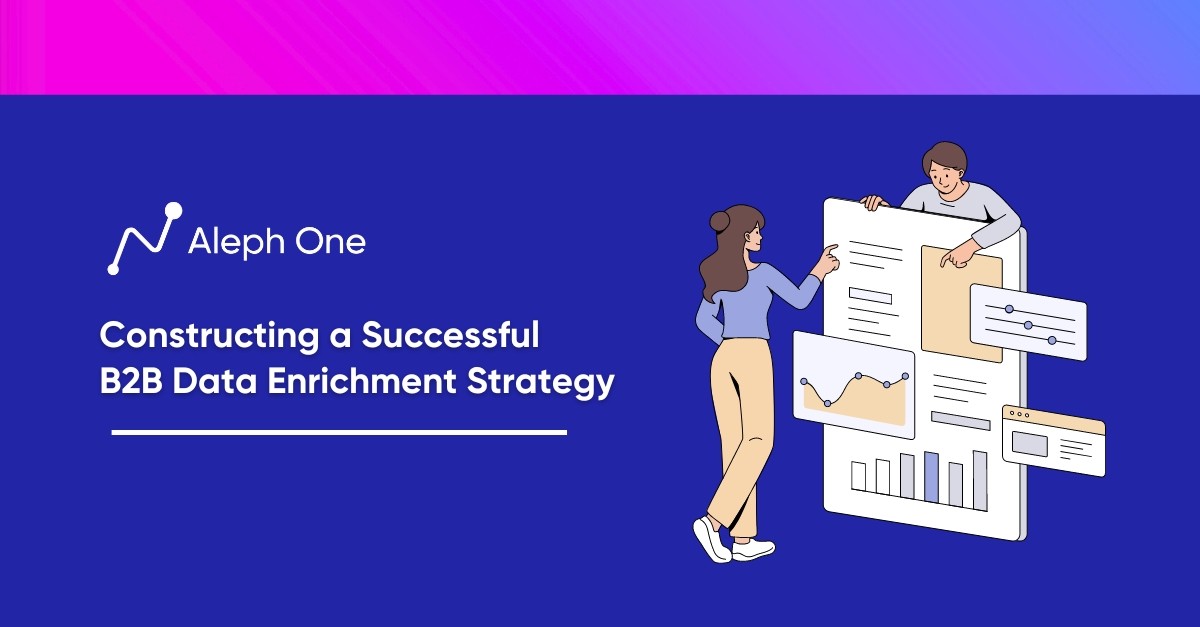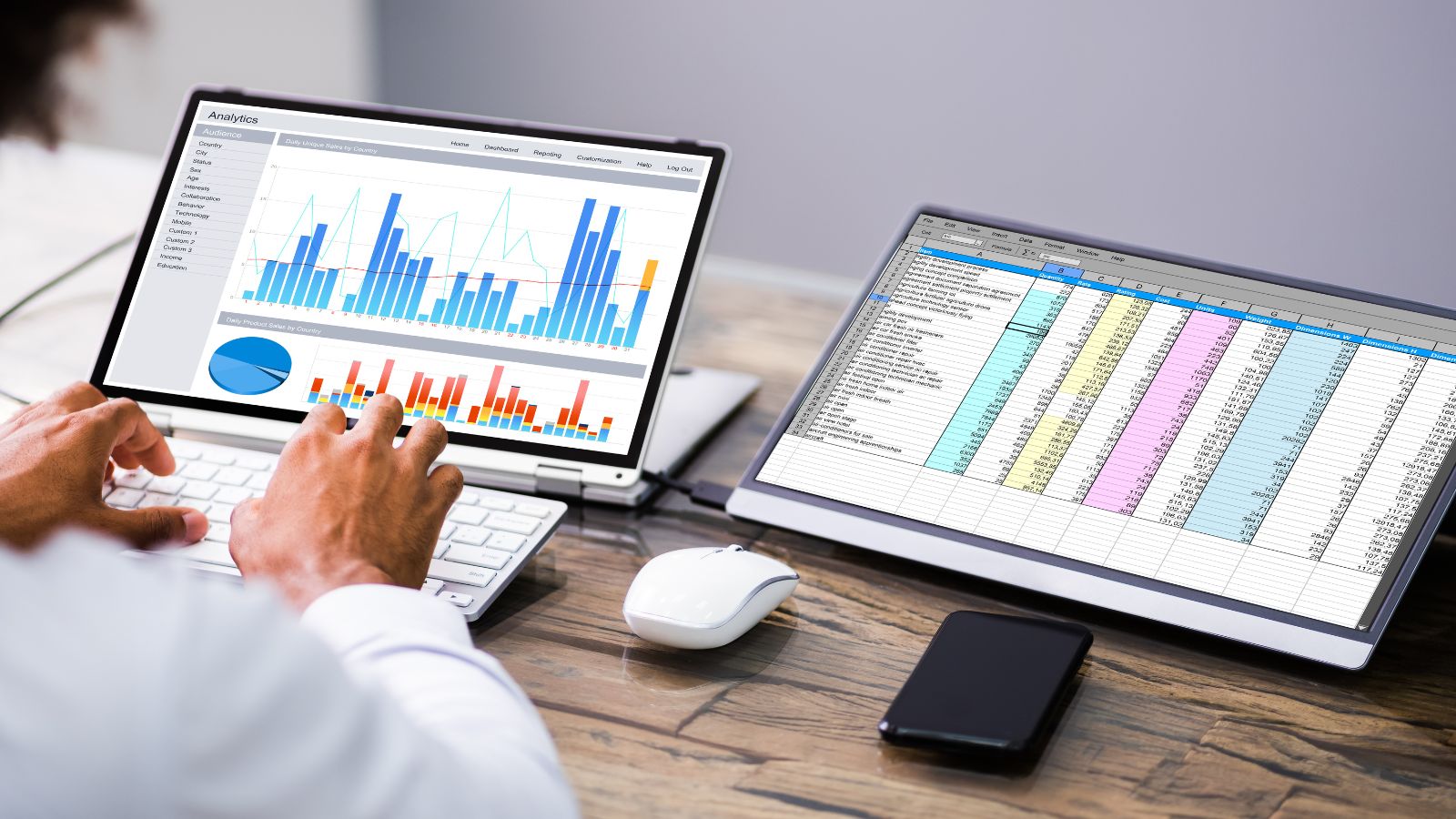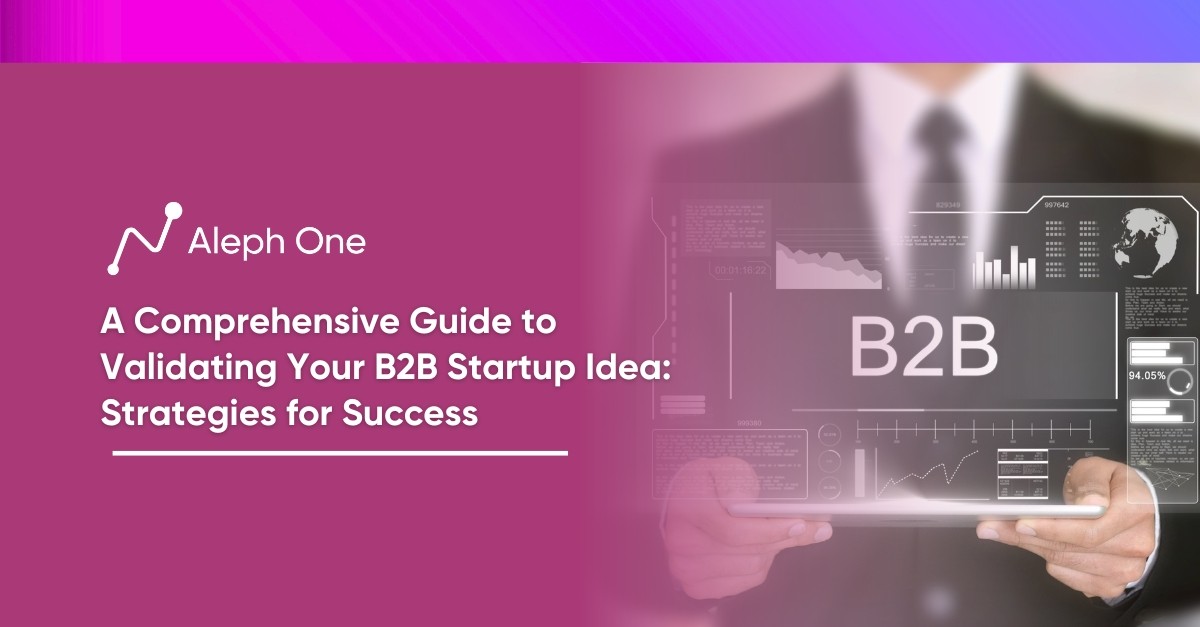Let’s work together to build something amazing. Share your project details and our team will reply to figure out the next steps to your success.

B2B companies hold a treasure trove of largely untapped data in today’s data-driven business landscape. The key to unlocking its full potential lies in a well-crafted data enrichment strategy. Data enrichment involves enhancing existing data with additional attributes and information from internal and external sources. For B2B companies, this process opens doors to valuable insights and growth opportunities hidden within their data. By gaining a more comprehensive view of customers, products, and markets, businesses can personalize marketing campaigns, optimize product portfolios, identify customer segments, and explore new areas for expansion. However, achieving successful data enrichment requires overcoming challenges such as data integration, outdated techniques, failure to leverage external data, and a lack of a systematic approach. By adopting a strategic approach and leveraging external data sources effectively, B2B companies can harness the untapped potential of data enrichment to fuel their marketing and sales efforts, foster customer experiences, and achieve accelerated business growth in a highly competitive landscape.

The Untapped Potential of B2B Data Enrichment
Most B2B companies sit on a wealth of data but need more ability to harness their full potential. Customer data, product data, and market data are largely untapped resources for many organizations. With the right data enrichment strategy, businesses can uncover valuable insights and new opportunities for growth hidden within their data.
What is Data Enrichment?
Data enrichment refers to enhancing existing data by appending additional attributes and information from internal and external sources. For B2B companies, data enrichment provides a way to gain a more complete view of your customers, products, and markets. With enriched data, you can identify customer segments, personalize marketing campaigns, optimize your product portfolio, and discover new areas for business expansion.
How B2B Companies Struggle With Data Enrichment
Despite the clear benefits, many B2B companies struggle with data enrichment for several reasons:
- Lack of data integration. Customer, product, and market data often reside in silos across an organization. Integrating data from different sources is a prerequisite for adequate enrichment.
- Reliance on outdated techniques. Methods like basic data appending are no longer sufficient. Advanced techniques such as data modeling, third-party data integration, and re-engagement campaigns are needed.
- Failure to leverage external data. Internal data only provides part of the picture. External data sources can help fill the gaps to provide a 360-degree view of your customers, products, and markets.
- Lack of a systematic approach. Data enrichment requires more than a one-off project. Companies need a well-defined strategy and process for continuously enriching data over time.
- Unclear business objectives. Without concrete goals for data enrichment, efforts can lack direction and yield limited results. Companies must align on key objectives such as improving data quality, gaining customer insights, and identifying growth opportunities.
With a strategic approach to data enrichment, B2B companies can overcome these challenges and unlock the full potential of their data. Enriched data translates to improved customer experiences, more impactful marketing, and accelerated business growth. Data enrichment is no longer a “nice to have”—a prerequisite for success in today’s data-driven business landscape.
The Rise of Data-Driven B2B Marketing
B2B marketing has traditionally been an imprecise discipline, relying more on intuition and experience than hard data. However, in the last decade, data-driven marketing has transformed how B2B companies make decisions and connect with customers. Using data analytics and business intelligence, marketers can identify target audiences, personalize messaging, and optimize campaigns based on facts, not hunches.
Aggregating and Analyzing Data
Data enrichment, the process of aggregating and analyzing data from multiple sources to gain deeper insights is the next frontier for data-driven B2B marketing. By combining data from internal systems like CRM and marketing automation platforms with external data sources, marketers can develop a 360-degree view of their customers and markets. This holistic perspective helps marketers understand their customers’ needs, priorities, and journeys in a much more sophisticated way.
With data enrichment, B2B marketers can:
- Gain visibility into customer pain points, challenges, and triggers. Marketers can leverage data to determine which events or scenarios will most likely drive a need for their products and solutions.
- Uncover new customer segments for micro-targeting. Marketers may identify niche segments that would benefit from tailored messaging and offers by analyzing firmographic, technographic, and intent data.
- Personalize the customer experience at scale. Using predictive analytics on enriched data, marketers can determine the topics, content, products, and offers most relevant for each customer and serve them at the optimal time.
- Track the impact of campaigns and optimize in real-time. With an integrated view of the customer journey across channels, marketers can see how customers respond to campaigns and make adjustments to improve performance, even as campaigns are still running.
- Identify upsell and cross-sell opportunities. Enriched data provides visibility into which products or features each customer may need next based on their characteristics and behavior. Marketers can prompt sales teams with highly relevant upsell and cross-sell recommendations.
Data enrichment is a must-have capability for any marketing organization seeking an edge. The insights unlocked by enriching your data can drive more targeted, impactful campaigns and a superior customer experience. Data enrichment deserves to be a top priority for B2B marketers seeking sustainable growth.
3 Key Goals of B2B Data Enrichment
A robust B2B data enrichment strategy should aim to achieve three key goals:
1. Improve Data Quality and Completeness
Enriching your data with additional attributes and filling in missing values can help address issues like inaccurate, outdated, or incomplete data that many B2B companies face. Data merging and third-party data integration can be used to verify, update, and append new data to your existing records. The end result is a single customer view with a complete set of attributes to power your marketing and sales efforts.
2. Gain Customer Insights for Micro-segmentation
Enriched data provides a deeper understanding of your customers and their key attributes. This enables more precise segmentation and targeting based on industry, company size, location, technologies used, and more. Micro-segmentation allows you to tailor messaging and personalize experiences for your customers. It also ensures sales reps have the insights they need for higher-quality conversations.
3. Identify New Opportunities for Growth
Data enrichment exposes opportunities you can’t see alone with your internal data. Integrating third-party data sources provides a broader view of your market, customers, and products. You may find pockets of high-value customers to target, adjacent segments to expand into, or ways to optimize your product portfolio. Growth opportunities could exist in new customer segments, new markets, new products, or boosting customer lifetime value.
With the massive amounts of data available today, the possibilities for enrichment are endless. However, focusing on high-impact areas that align with key business goals is important. A targeted data enrichment strategy, backed by the right techniques and data sources, can yield significant benefits for B2B companies looking to gain a competitive advantage. Enriched data fuels data-driven marketing and sales and the insights for uncovering new growth.
Evaluating and Integrating External Data Sources
Not all external data sources are created equal. It is important to evaluate data sources based on factors such as accuracy, completeness, cost, and terms of use before integrating them into your systems.
Accuracy
Accuracy refers to how correct and up-to-date the data is. Inaccurate data can lead to poor insights and impaired decision-making. Look for data sources that clearly state their data collection and verification methods.
Completeness
Completeness refers to how much of your target data is covered. For enriching customer data, look for sources with a high percentage of your customers included. For market data, look for sources that provide the deepest level of granularity and segmentation.
Costs
Cost consists of any fees to access and use the data. Ensure costs are reasonable for the value and ROI the data can provide. Some data sources offer tiered access at different price points. Start with a lower tier before investing in more robust data.
Terms of Use
Terms of use refer to any restrictions on how the data can be used and shared. Look for “unrestricted use” data sources that allow you to fully integrate the data into your systems and share insights both internally and externally. Restrictive terms of use can limit the benefits of the data.
Data Sources
Recommended B2B customer data sources include D&B Hoovers, ZoomInfo, and DiscoverOrg. For product data, options include Gartner and IDC. For market data, consider Statista, Forrester, and McKinsey.
To properly integrate external data sources, map the source data to your internal data model and schemas. Use matching keys such as company name, address, and industry codes to connect records from different sources. Combine data at the record level to gain a single view of the customer, product, or market. Continuously validate integrated data and re-check source accuracy to ensure high data quality over time. With the correct evaluation and integration of external data sources, you can significantly enrich your B2B data.
How Data Enrichment Uncovers New Growth Opportunities
With enriched data, you can uncover new growth opportunities hidden from plain sight. See how B2B companies have leveraged data enrichment to discover new customer segments, expand into adjacent markets, optimize their product portfolio, and boost customer lifetime value. Data is the new currency for growth.
The Benefits of Enriched Customer Data
Enriched customer data enables you to identify new customer segments and micro-segments based on attributes like demographics, behaviors, and preferences. You can then tailor marketing campaigns and product offerings to each segment. For example, a technology company enriched their customer data with firmographic details and discovered a new segment of small but fast-growing businesses. They launched a new product bundle targeting this segment, which became their fastest-growing product line.
Enriched Market and Product Data
Enriched market and product data allow you to spot opportunities in adjacent markets. By analyzing market trends and seeing connections between products, you can find natural product line extensions that your customers will value. A manufacturing company integrated third-party data on industry trends and forecasts with their product sales data. They realized one of their products was popular in an unexpected market segment, leading them to develop a new product variant targeted at that segment. It opened up an entirely new market for them.
Data Enrichment
Data enrichment also helps optimize your product portfolio by identifying high- and low-performing products. You can double down on the winners, make strategic changes to improve underperforming products, and cut products that are bleeding money. A software company used enriched data to analyze their product portfolio’s market fit, revenue, and growth potential. They identified two underperforming products to discontinue, freeing up resources to invest in their top-performing products.
Enriched Customer Lifetime Value Metrics
Enriched customer data, especially data on customer lifetime value (CLV) metrics, shows you how to maximize the value of your existing customers. You can tailor retention campaigns to high-CLV segments, upsell and cross-sell based on needs and behaviors, and focus expansion into new markets where you have the most valuable customers. A B2B services company analyzed their customer data and found a small group of high-CLV customers. They designed a tailored loyalty program and concierge services for these customers, which increased their CLV by over 30% in two years.
Uncover Growth Opportunities with Enriched Data
Data enrichment is key to uncovering the growth opportunities hidden within your business. With the right data and insights, you can find new ways to reach your full potential and gain a competitive advantage. What growth opportunities will your data reveal?
FAQ
What are some of the challenges B2B companies face when trying to implement data enrichment strategies?
The main challenges B2B companies tackle when implementing data enrichment strategies often include the lack of data integration, reliance on outdated techniques, failure to leverage external data, and unclear business objectives. It’s important to tackle these issues: integrating data from different sources to avoid silos, adopting advanced techniques like data modeling, utilizing external data sources for a more comprehensive understanding, and setting clear goals aligned with broader business objectives.
How does the integration of internal and external data sources improve marketing strategies and customer experiences in B2B businesses?
Integrating internal and external data sources significantly enhances marketing strategies and customer experiences in B2B companies. It offers a 360-degree view of customers and markets, meaning with deeper insights, marketers can identify target audiences, personalize campaigns, and optimize them based on data-driven facts. Furthermore, this integration allows more visibility into customer behavior and preferences, enabling enhanced personalization, immediate campaign adjustments, and superior customer experiences.
How does data enrichment help to identify new markets or customer segments and optimize product portfolios in B2B companies?
Data enrichment aids in identifying new markets or customer segments by integrating and analyzing additional data attributes. This enriched data can highlight untapped customer segments suitable for tailored messaging and offers. In terms of optimizing product portfolios, enriched data can reveal high and low-performing products based on customer usage and preferences. Therefore, businesses can strategically address lacking areas and double down on the successful ones, leading to a more profitable and satisfactory product line.
Get the latest news and updates from Aleph One in your inbox.



